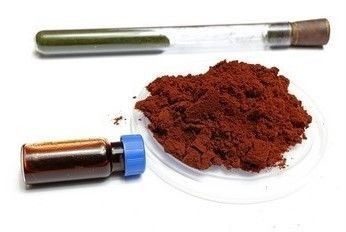Fingerprinting of Herbal Medicines
Inquiry
With the rapid growth in demand for herbal medicines and their preparations worldwide, assessing and ensuring their quality has become particularly urgent. Quality control of herbal medicines is much more difficult than synthetic chemicals due to the variety and complexity of the chemical components they contain, the difficulty of fully characterizing all compounds, and the fact that these compounds often have synergistic effects in terms of treatment. Fingerprinting of herbs is the process of obtaining a chromatogram that provides a comprehensive and specific picture of the chemical characteristics of a herb, based on the appropriate treatment of the natural herb, with the aid of certain analytical tests, and the resulting chromatogram can be used to identify the drug or to evaluate its specific properties. Lifeasible offers herbal fingerprinting techniques for the evaluation of herbal medicines, for the identification of authenticity, for the differentiation of species and for ensuring their consistency and stability, and for the evaluation of the chemical structure of herbal medicines and their quality performance status.

Chemical fingerprinting of herbs. Spectra or chromatograms are obtained from determining various chemical components of herbs.
Spectral fingerprinting
- Infrared spectroscopy (IR).
Has the advantages of being quick, simple, and inexpensive to test, but it cannot be used as a quantitative analysis method. Includes Fourier transform infrared (FT-IR) combined with second derivative infrared (SD-IR) and two-dimensional correlation infrared (2D-IR) spectroscopy.
- UV spectroscopy.
It is practical, reliable and sensitive, non-polluting, and reproducible. It does not adequately reflect the changes in chemical composition in herbal materials, nor does it allow accurate quantitative analysis of herbal medicines.
- Nuclear magnetic resonance (NMR) spectrometry.
It has the characteristics of singularity, comprehensiveness, characterization, and quantification. It is universally applicable in the analysis and identification of herbal materials.
Electrochemical fingerprinting
A simple analytical method based on the electrochemical properties of the substance to be tested and the principles of electrochemistry at low cost, high sensitivity, and low consumables. It is mainly suitable for analyzing herbs containing terpenoids, flavonoids, alkaloids, anthraquinone, and other chemical components capable of electrochemical reactions.
Chromatographic fingerprinting
- Thin layer chromatography (TLC).
It has the advantages of easy operation, simple equipment, good sensitivity, comparability, high specificity, and easy color development. Includes high-performance thin-layer chromatography (HPTLC).
- High-performance liquid chromatography (HPLC) method.
Has the advantages of high pressure, high sensitivity, high efficiency, and automation. It can be connected to UV detectors, diode array detectors (DAD), electrochemical detectors, evaporative light detectors, etc.
- Gas chromatography (GC).
High sensitivity, fast analysis speed, and good separation. It is mainly used in herbal medicine to analyze less polar components, volatile oils, or chemical components that can generate volatile components after derivatization.
- Capillary electrophoresis (CE) chromatography.
It is characterized by low sample volume, simple method, high efficiency and rapidity, and low cost. Reproducibility is poor.
Biological fingerprinting of herbs. This is mainly used to identify the authenticity of herbal genetic fragments.
We use gene sequence analysis at the molecular level to distinguish and classify the geographical distribution and variation of herbs, including genomic fingerprinting, proteomic fingerprinting, and DNA fingerprinting. The most commonly used methods for the study of herbal biometric fingerprinting are polyacrylamide gel electrophoresis (PAGE), random amplified polymorphic DNA (RAPD) molecular marker, and polymerase chain reaction (PCR).
The complex composition of herbal medicines, the mixture of active and inactive substances, and the obvious differences in components make traditional chemical methods unable to perform qualitative and quantitative analysis quickly and accurately. Lifeasible offers a comprehensive approach to identifying herbs using herbal fingerprinting, which is highly specific, stable, and reproducible. This allows us to identify and evaluate the quality of herbs with a high degree of accuracy, reflecting the specificity of herbal components and allowing for qualitative and quantitative quality control analysis of herbs. Please feel free to contact us to submit your testing requirements.
For research or industrial raw materials, not for personal medical use!
Related Services

